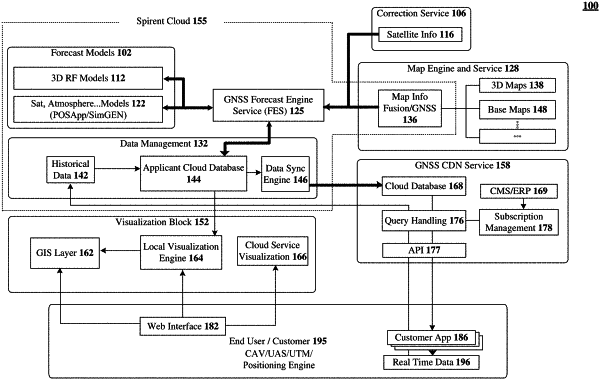| CPC G01S 19/28 (2013.01) [G01S 19/22 (2013.01); G01S 19/36 (2013.01); H04L 67/12 (2013.01)] | 20 Claims |

|
1. A method of improving accuracy of a GNSS receiver that has a non-directional antenna, including:
sending a request for predictive data, the predictive data including first data specifying predicted line-of-sight visibility from the receiver to individual satellites for an area that includes the receiver to a content delivery network (abbreviated CDN) that caches the predictive data;
responsive to the request, receiving the predictive data; and
extracting from the first data a prediction for a present or future location of the receiver and using the extracted prediction data for satellite selection, for choosing some and ignoring other individual satellites.
|